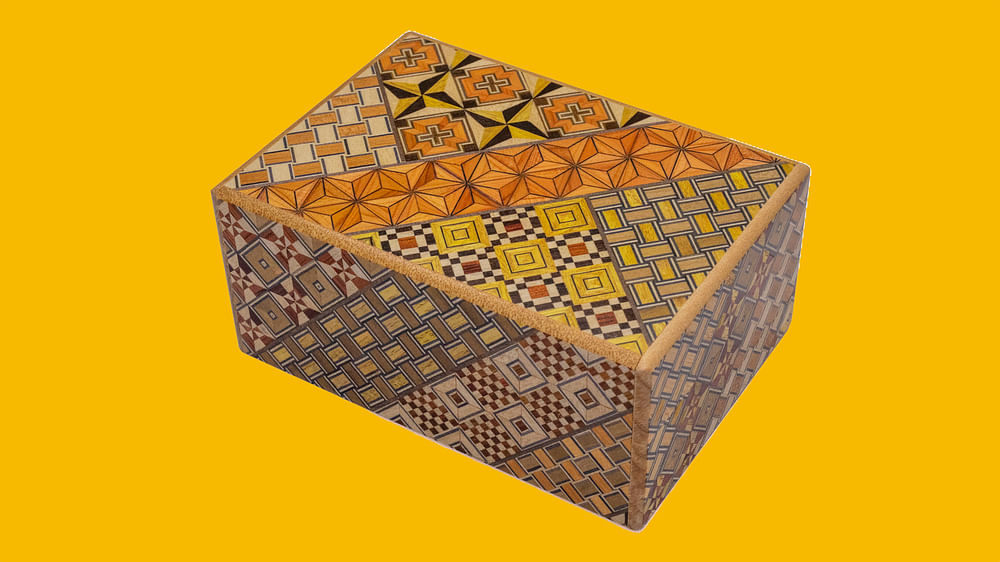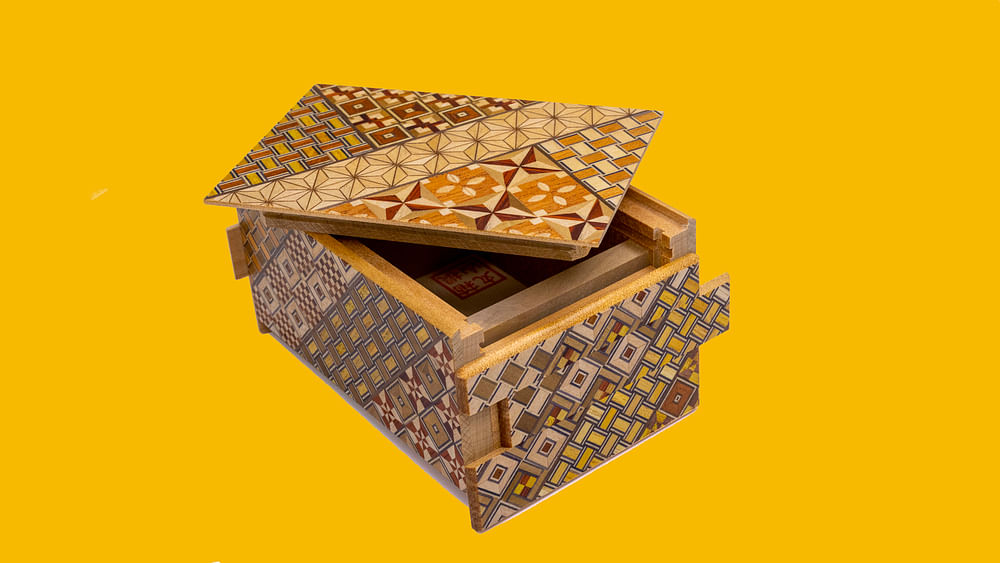The History Of Japanese Puzzle Boxes
Secret box. Trick box. Mystery box. Regardless of what you call these Japanese miracles, they are among the most interesting and aesthetically-pleasing wooden craftsmanship on the planet. As magicians, we're all interested in the latest magic tricks, but sometimes amazing magical items can be even more interesting.
The Himitsu-Bako (personal secret box) originated more than 100 years ago and is still made in the Hakone-Odawara district of Japan. 3 generations of Master Craftsmen have made use of the superb variety and plenitude of trees around the region. Stunningly geometric designs are made by utilizing different blends of naturally-shaded woods, similar to the conventional parquet craftsmanship which embellish numerous Himitsu-Bako. The appeal of the Japanese puzzle box is much wider than just its aesthetic attributes. They are cherished as a Japanese work of art.

Instructions to open a Japanese Puzzle Box
On the face of it, a puzzle box is simply a beautiful box. There is no obvious lock and apparently no opening at all. Nonetheless, as one explores intently, clues start to uncover themselves. When you look closely, you will see that its surface incorporates a few moveable pieces. You can slide this piece here, move that one there, push another on the opposite side, etc. It is a very precise art, moving bit by bit, sequentially until you succeed. Each puzzle box has its own one of a kind arrangement of steps that must be followed in order. Failure to follow each step in the right sequence will mean it will remain locked. From 2 Steps to 122 Steps, conventional Japanese puzzle boxes make certain anything placed within will be kept safe.
Japanese Puzzle Boxes are wonderful pieces of workmanship.
"Hakone-Yosegi-Zaiku Marquetry" is a woodcraft that makes use of local materials that are accessible around the town of Hakone, which lies toward the south of Tokyo. This marquetry procedure was created in the late Edo Period by a neighborhood carpenter, Nihei Ishikawa (1790-1850), who lived in the Hatajuku region of Hakone. Found on the Tokaido, the main road between Osaka (the business community) and Edo (the country's capital around then), Hakone was also renowned for its hot springs which brought tourists from everywhere in Japan. Due to the tourist trade the springs attracted, Hakone-Yosegi-Zaiku marquetry became famous everywhere in the country as one of Hakone's gifts to the world.
None of the wood utilized in "Hakone-Yosegi-Zaiku Marquetry" is stained and each piece is made using the characteristic shades of the different trees that are around Hakone. "Yosegi-Zaiku Marquetry" uses a wide range of different hued wood which are at first crushed in a tight clamp to make the trademark geometric shapes. A thin slither of this wood is planed to make one unit or sheet that is .01 cm (0.004 in.) thick. These paper-thin sheets are then stuck on the facade of the box.
"Zougan-Zaiku Marquetry" is made by creating examples of scenes and characters constructed from natural wood tones. In 1889, Sengoku Shirakawa, who was a Yumoto Chaya (coffeehouse) proprietor, made the first using a sewing machine imported from Germany that effectively helped with the different designs. This improved accuracy. Subsequently, Zougan-Zaiku Marquetry Wooden Mosaic was elevated higher than ever before. Like in "Yosegi-Zaiku Marquetry", very thin paper-like sheets are adhered to different boxes.
Japanese Puzzle Boxes are created in the Hakone-Odawara area of Japan
The mountains of Hakone are noted for the various assortments of trees found along their inclines. "Hakone-Yosegi-Zaiku Marquetry" is a type of decorated and mosaic woodwork created in this area, and skilled workers have utilized the abundance of wood tones and surfaces found here to create their intricate geometric designs.
Around 100 years ago, new sorts of Hakone-Yosegi-Zaiku arose, they were Himitsu-Bako (Personal Secret Box). Initially 5 sun (10x15x6cm) size and 6 sun (13x19x9cm) size items which need 54-66 stages to open were created. They were used to hide important or valuable items. It couldn't be opened except if an exact sequence of moves was known. As well as the fact that they were useful boxes, their beautiful and intricate designs helped popularize the boxes. Despite the fact that they were very costly, these “Personal Secret Boxes” achieved fame among individuals of high society.

This Trick Box has a Secret Drawer.
Today, there are easier Himitsu-Bako you can get. Some require just 7-10 stages to open. These were created to expand interest among the overall population and make a way that anybody could buy them. They keep on being a main keepsake to the numerous tourists who visit the Hakone area every year.
In the Hakone-Odawara area of Japan, there are around 100 individuals who are working in the field. Of these 100 individuals, just around 30 experts produce Yosegi-Zaiku and around 4 skilled workers produce Moku-Zougan. The Himitsu-Bako is created by just 9 conventional specialists. These skilled workers don't make the Yosegi-Zaiku, which embellishes their Secret Puzzle boxes. The Himitsu-Bako specialists produce their mysterious puzzle box practically alone beginning to end. They each pick the wood they will use and afterward let it dry, or season. Then, they slice and gather wood pieces to frame the puzzle box. At last, they apply the Yosegi-Zaiku to the outside of the box with great care. The youngest of the Himitsu-Bako Master Craftsmen is around 60 years of age.
Himitsu-Bako Master Craftsman
Mr. Yoshio Okiyama
Mr.Yoshio Okiyama was born in Hakone, Japan in 1924. At age 12, he began making Himitsu-Bako while apprenticing with his father, Mr. Yoshitaro Okiyama. Winning numerous honors during that time for his hand-made boxes; Mr. Okiyama built up the skills for the 27 step, 54 step, and 66 step Himitsu-Bako. Mr. Okiyama never had an apprentice, he is perceived as a third generation Himitsu-Bako Master Craftsman. In 1994 the Association of Traditional Crafts Development of Industry in Japan lauded Mr. Okiyama. Unfortunately, Mr. Okiyama died in the spring of 2003. He will be remembered fondly. To study Mr. Okiyama's life and astounding commitments to the universe of Himitsu-bako, acquire a copy of; A Collection of Works by Secret Box Master Craftsman Yoshio Okiyama.
Mr. Yoshikazu Goto
Mr. Yoshikazu Goto was born in Hokone, Japan in 1935. His great Himitsu-Bako is the aftereffect of nearly 45 years of involvement with carpentry. Numerous honors have been introduced to Mr. Goto over time because of his devotion to delivering unquestionably highly superior works of art. He won Hakone Odawara Woodworking Crafts contest in 1998.
Browse all wooden puzzles
Useful links for our magic products
